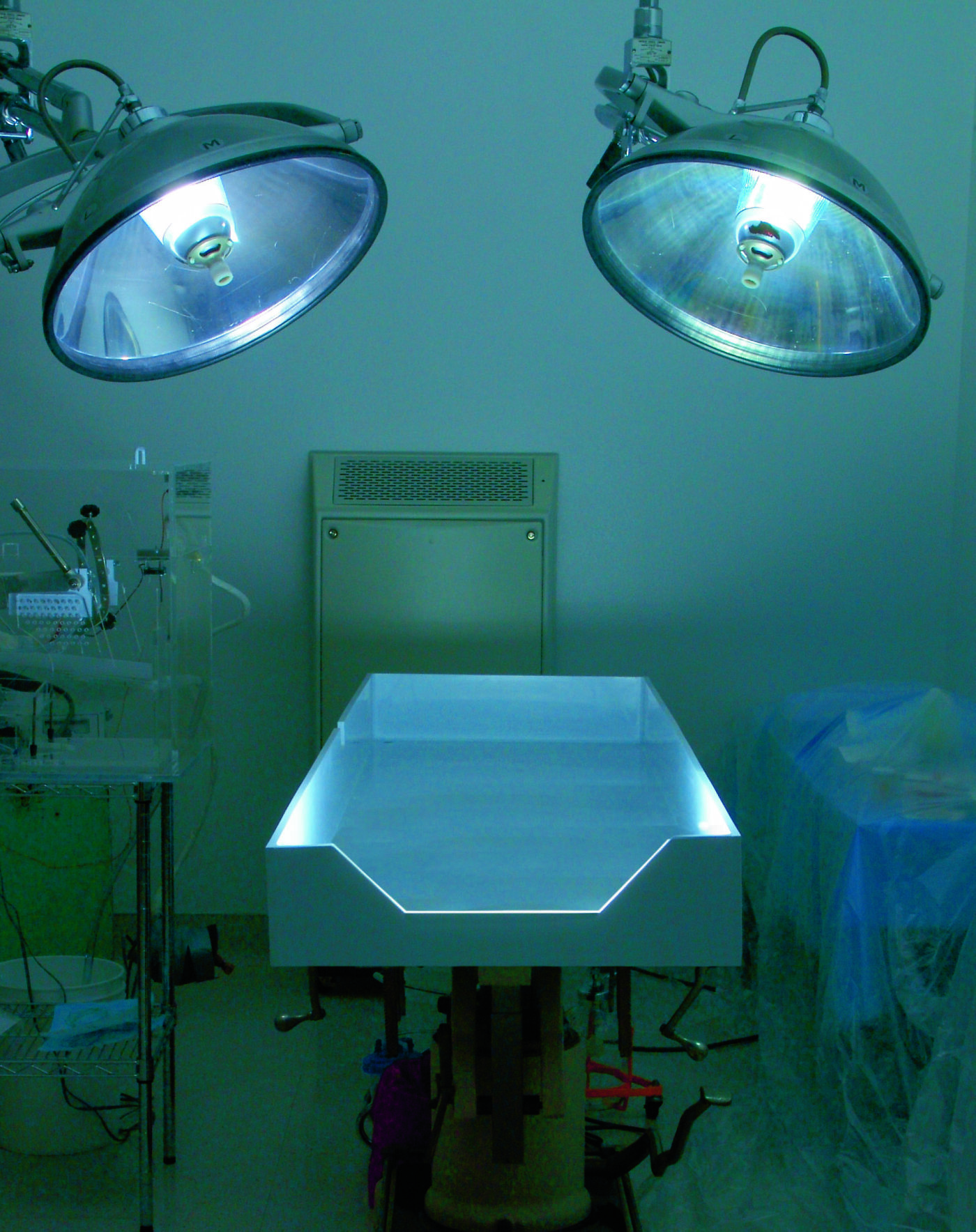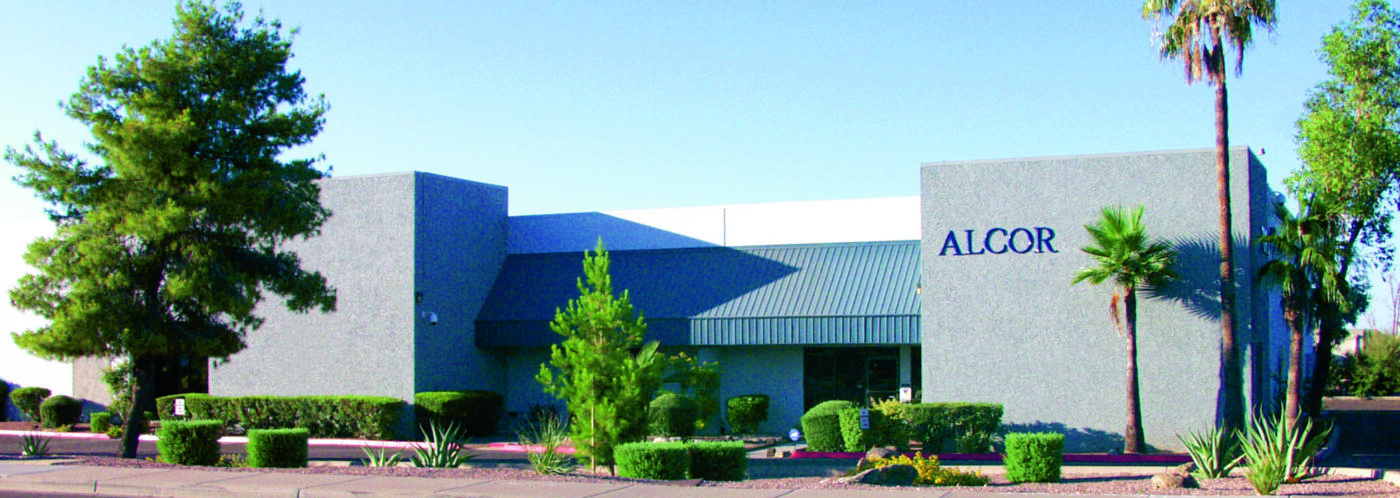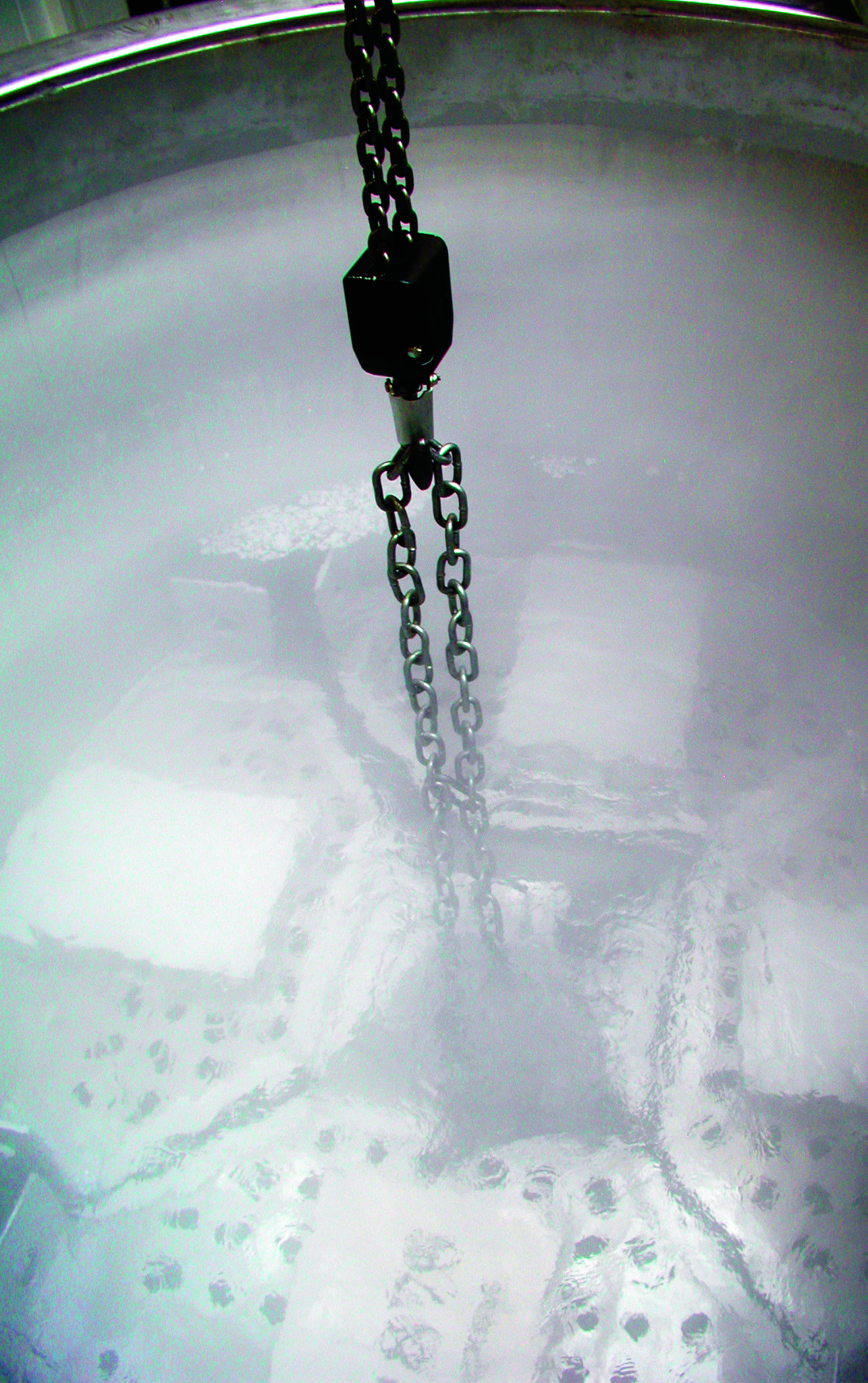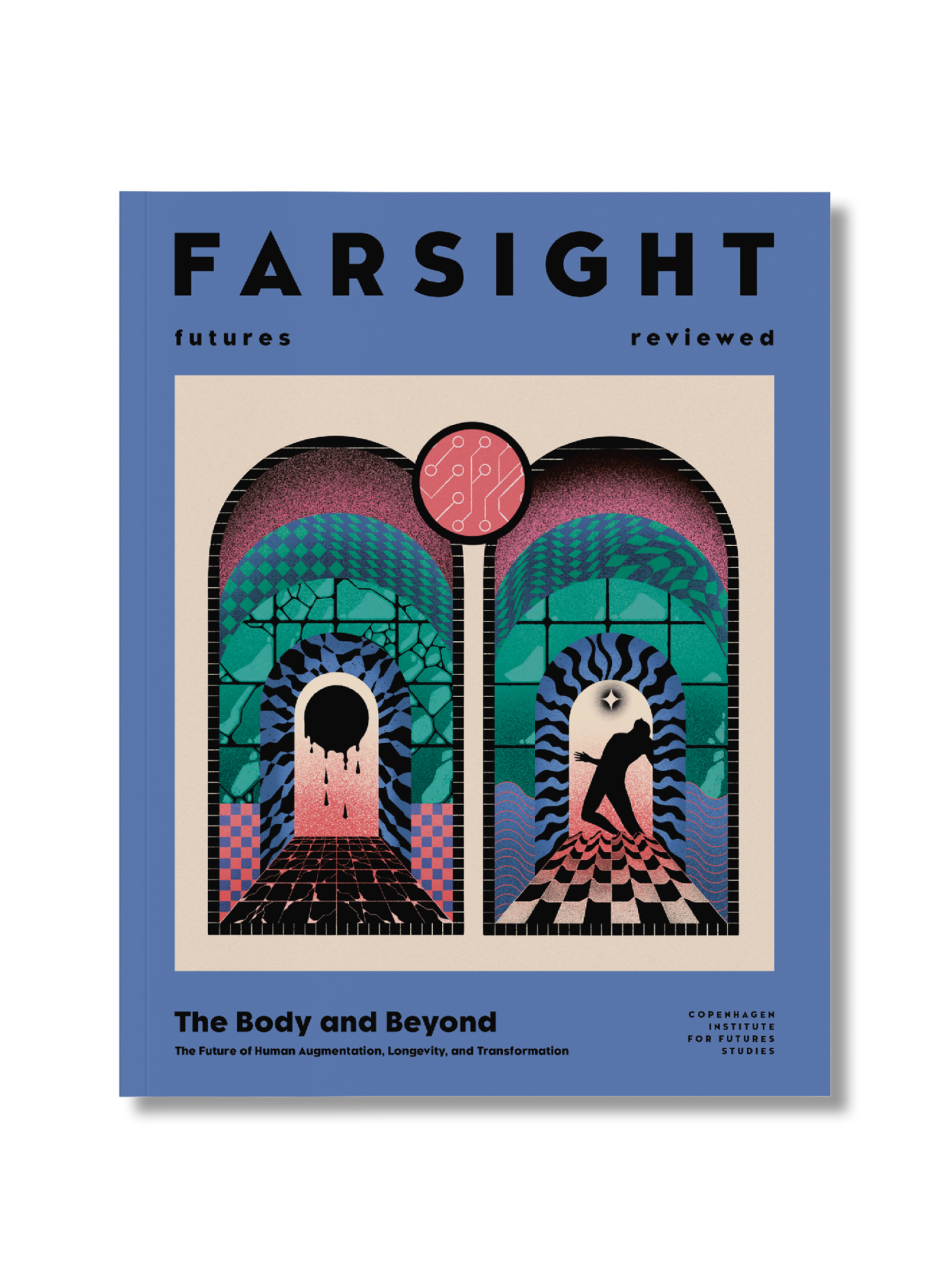
In turn, we use cookies to measure and obtain statistical data about the navigation of the users. You can configure and accept the use of the cookies, and modify your consent options, at any time.

James Arrowood, co-CEO of Alcor Life Extension Foundation, wants a fresh start for the business of reviving the dead.
Image: Adobe Firefly
“I didn’t know the first thing about freezing a body,” James Arrowood says. “I was brought in to help grow the organisation past its garage-band phase.”
Since assuming the position of co-CEO of Alcor Life Extension Foundation in late 2022, Arrowood has been working to bring the organisation, a world leader in the frontier science of cryonics, into the mainstream. It may be a steep challenge, given that Alcor’s ultimate aspirational goal of bringing the dead back to life is at present more science fiction than reality. But Arrowood, an attorney specialised in emerging technologies, sees this reorientation as crucial to the organisation’s long-term success. Until recently, he says, Alcor has been a science club of world class intellects with no concept of how to best put out the message of why their work is important.

Broaden your horizons with a Futures Membership. Stay updated on key trends and developments through receiving quarterly issues of FARSIGHT, live Futures Seminars with futurists, training, and discounts on our courses.
become a futures memberSince its foundation in 1972, Alcor has cryopreserved either the whole body or brain of 230 humans and animals through a process known as ‘vitrification’. Following legal death, Alcor’s patients are drained of blood and their bodies perfused with a cryoprotective chemical that prevents cells from fracturing, as the body is cooled to subfreezing temperatures of -196 Celsius. This preserves tissue in a ‘glassy’ rather than crystalline, icy state, shielding it from the substantial damage that freezing can cause. Cryonicists believe this improves the chances that patients can be revived at some distant point in the future.
Alcor currently has 1,435 members signed up to have their bodies vitrified and preserved following their death. Judging by the current state of biomedical science, they may have to wait a long time until their hope of future revival is achievable. Some believe resuscitation of clinically dead, frozen humans to be a scientific impossibility, regardless how many years of research are poured into it. Naturally, Arrowood does not share this view, but he prefers instead to focus the conversation on the more immediate potential applications of Alcor’s research, in areas such as brain and organ preservation, animal preservation, and induced hypothermia.
“The fragile protein structures in your brain are incredibly complex and bringing them back is not something we will be able to do anytime soon. I see the cryopreservation and banking of kidneys for better transplant matching as something that absolutely should be possible in our lifetime – within 10-15 years,” he says. “In Alcor’s history, nobody has stopped long enough to tackle these bite-sized components. In the past, it was always this massive aspirational goal of revival that was the focus.”
To Arrowood, this redirection of attention from aspirational to achievable goals is above all a question of messaging. Some regard cryonics as snake oil and quack science, and Alcor is sometimes accused of being in the business of selling false hope of a second life to the dying. Arrowood wants to shift these perceptions by tempering expectations and not promising more than Alcor know they can deliver.

“The messaging for 50 years has been that if we’re successful with the aspirational component, everyone will jump on board because they can live longer,” he says. “But we need to assist in doing several much ‘smaller’, difficult things first before we can get there. Telling people ‘You will live in 400 years’ without success on an incremental scale is not credible.”
Reshaping Alcor’s image also means changing the language around cryonics, avoiding the use of words and phrases with common connotations to science fiction or religion – resurrection, reanimation, immortality – and instead opting for a more clinical terminology.
“I’ve advised staff at Alcor that we don’t talk about immortality. It’s not a realistic, scientifically provable expectation, so why confuse people with that rhetoric?” This has caused some raised eyebrows among the old school cryonicists, Arrowood explains, who see it as Alcor turning away from its philosophical roots.
“They say ‘Oh my gosh, James is really going against everything we’ve been trying to achieve.’ But facts and evidence matter. And immortality is not a realistic goal,” he says. “It’s also an immediate ‘turn off’ for many mainstream listeners. Alcor is a scientific research organisation and I think that over the last 20 years, too much time has been spent talking about philosophical ‘what ifs’ that should have been spent doing hard research science.”
Whether it’s a marketing strategy, a sign that cryonics is maturing, or a bit of both, Arrowood’s reorientation of Alcor can be seen as an attempt to break away from cryonics’ turbulent past. The field’s practical history stretches back to 1967 when a psychology professor by the name of James Bedford became the first human being to be cryopreserved. He was transferred to Alcor’s facilities in 1991, where he has remained ever since.
Although Bedford’s chance at revival may be slimmer than subsequent patients, given the relatively primitive methods available at the time of his freezing, his preservation still has scientific merit, says Arrowood.
“I love the fact that we have Bedford. Put aside the prospects for future revival and think of it this way: nowhere else in the world does anyone have a brain that was preserved in such a potentially viable state after death from someone who was born in the late 1800s. That brain has been affected by decades of industrialisation, pollution, and other environmental effects, and we can analyse it and compare it with brains born today. That has incalculable scientific value,” he says. “Think of the loss to humanity when Einstein’s brain was cut up, scattered, and now can never be meaningfully studied simply because folks wouldn’t think of cryopreserving it at the time. What a tragic loss to science without a good reason.”
The facilities that now house Bedford’s corpse are a far cry from those available in the early days of cryonics, when poorly funded operations were the norm. Alongside the makeshift nature of those pioneering attempts came morbid tales of experiments gone wrong and bodies thawing and decaying, either due to mismanagement or money running out. Bedford can be considered a lucky survivor from that grizzly past.
Among the early cryonicists, Robert Nelson, the organiser of Bedford’s preservation and the first president of the Cryonics Society of California, stands out due to his DIY sensibilities and extensive track record of attempted preservations. A TV repairman-turned-scientist, Nelson became enthralled with cryonics after reading Dr. Robert Ettinger’s seminal 1962 book The Prospect of Immortality. Throughout the 1960s and 70s, Nelson cryopreserved a handful of deceased humans, to varying degrees of success.
Nelson’s career in cryonics ended in 1974 following an infamous case of bodily decay which culminated in the local press forcing open a discontinued storage site and finding the stench emanating from within so nauseating that it stripped away all defences, “spinning the stomach into a thousand dizzying somersaults,” as one reporter described the experience.

Explore the world of tomorrow with handpicked articles by signing up to our monthly newsletter.
sign up hereNelson, who had run out of funds to adequately care for the bodies in his possession, would defend himself by saying he hadn’t done anything criminal or wrong, only that he had made “a lot of bad decisions”. Although he quit the cryonics business that year, he didn’t abandon his belief in it. He was himself cryopreserved at the Cryonics Institute upon his death in 2018.
Alcor has had its own fair share of controversies. In 1987, Dora Kent became the eighth patient to be put in cryonic suspension at their facilities and the subject of a legal fight. Kent, deadly ill from Alzheimer’s disease and pneumonia, was brought to Alcor where employees removed her head and prepared it for longterm storage in its nitrogen-cooled container. Kent’s death, however, had not been legally pronounced by a physician. The coroner, suspecting that she may still have been alive when the procedure began, demanded her head for autopsy, along with all Alcor’s other patient records and bodies. When the staff refused to comply, the police were called and several employees were arrested, including then-president Mike Darwin. Alcor’s facilities were raided by a SWAT team a week later, and most of their property was seized.
Alcor was vindicated when it won the subsequent lawsuits against the county, and the frozen head of Dora Kent was protected by a restraining order against the coroner. Reportedly, the incident led to a surge of public interest in cryopreservation and contributed to a sharp increase in Alcor’s membership numbers starting in the late 1980s.
But that wasn’t the end of Alcor’s troubles. In 2009, they faced a crisis of a different kind when a former employee, Larry Johnson, published Frozen, a book which included several severe accusations of misconduct at Alcor. The most publicised allegation made by Johnson was the claim that a technician had taken a wrench to baseball star Ted Williams’ vitrified head. He was aiming for a tuna can that had been frozen stuck to it after having been used to prop it up in its container, Johnson said.
Alcor denied Johnson’s claims and accused him of attempting to profiteer from his employment there, stating that “some of the allegations in Frozen were so outrageous and/or so easily refuted by simple Internet searches that the defendants either did not know they were false or did not care.” Alcor eventually filed a lawsuit against Johnson to obtain damages for what they considered false and defamatory content. The litigation ended after Johnson declared bankruptcy and retracted some of his accusations, including the ones concerning the bludgeoning of Ted Williams’ severed head.
The longevity of Alcor, despite these past crises, could be considered a competitive edge in a tumultuous industry where many others have started and failed. In addition to the uncertainty surrounding the scientific feasibility of reviving the dead, patients are betting – some of them their entire inheritance – on cryonics companies being around decades or even centuries after their death to care for their bodies. To Arrowood, this prospect isn’t as implausible as it might seem.
“There are people who say that companies aren’t around for hundreds of years. Well, they’re wrong. Take the insurance industry. There are lawsuits happening today over things that occurred centuries in the past amongst entities that have survived in some way over that period,” Arrowood says, referring to how some insurance companies are still tied into litigation over sunken treasure from 300 years ago. The oldest companies in the world, most of them in Europe and Japan, have existed for hundreds of years, a few even for a millennium or longer.

Alcor aims to achieve a similar kind of longevity and is counting on its funding structure to do much of the heavy lifting. Instead of relying on living relatives to pay for storage of their suspended loved ones, Alcor charges a premium for conservation – 220,000 USD for a full-body preservation, 80,000 USD for neuropreservation – and locks more than half of that money into a patient care trust created strictly to fund maintenance of the cryopreservation facilities. In addition to this, donations help fund Alcor’s scientific research, which Arrowood refers to as a sort of crowdfunding by people with an interest in the science and a hope for the various incremental and aspirational goals being attempted. The financial insulation created by the trust, Arrowood believes, accounts for Alcor’s longevity and will ensure that it succeeds where many for-profit cryonics ventures have failed.
“The trust is run by a separate supporting organisation with its own board,” he explains. “The board members are signed up to be cryopreserved themselves and almost all of them have a family member actively preserved at Alcor, often their spouse or their child. So, they have an intense personal interest in making sure the organisation is safe and protecting those funds for the long run.”
One of the critiques often directed at cryonics is that its high financial barrier of entry essentially makes it escapism for wealthy people with a fear of death. Yet most of Alcor’s members, Arrowood makes a point of explaining, aren’t part of the 1%, but middle or upper-middle class Americans who have signed up through one of Alcor’s life insurance policies. He also expects the price of the cryoprotective chemical M22, which is currently between 50,000 and 100,000 USD per patient, to come down significantly in the future, making membership still more affordable.
Yet the question of whether cryopreservation is for everyone is not only a matter of whether more people will one day be able to afford it. Proponents of cryonics will have to work hard to dispel the widely held belief that we have an almost moral duty to give up and leave the world to our descendants once we go into cardiac arrest, not to mention the notion that ‘cheating death’ via cryonics somehow goes against nature.
There are also objections founded in the questions science doesn’t yet have a clear answer to. The perhaps biggest unknown is whether a revived version of you, one in which your preserved brain has been given a new body or has somehow been uploaded or embedded into technology, is really ‘you’, or someone else. Would your memories, your experiences, your conception of self be kept intact, or would this be an entirely different person?
Public aversion to cryopreservation might also rest on the fears, however unlikely they may be, of foul play in the future – of being stuck in a nightmarish scenario of perpetual technological enslavement.
“I’ve heard people say, ‘I don’t want to be in some kind of dystopian hell where my brain is in a jar and you’re using it to mine Bitcoin’,” Arrowood says, before quickly refuting this scenario. “Would it benefit Alcor if we started reviving brains with no quality of life? No, that doesn’t benefit anybody. It’s counterproductive and we wouldn’t have any interest in doing that.”

Still, Arrowood understands the skepticism some might have towards cryopreservation. “As a non-profit, we are not trying to push it on anyone,” he emphasizes. “But we want people to be aware of the positives that could come from the effort, even if you don’t personally care to be involved,” he says. “If it’s not for you, then that is perfectly understandable, but don’t belittle or interfere with someone’s individual right to choose what to do with their body when they die. Instead, respect and support their decision. After all, it is honoring their last wishes, at least in this lifetime.”
Scientifically speaking, death has always been a somewhat malleable term. The absence of a heartbeat used to be the determining factor. Today, brain activity is also considered an important criterion. Cryonicists advocate for stretching the definitions even further, so that finality is only marked by so-called ‘informationtheoretic death’, where parts of the brain that store memory and personality are damaged to such an extent that the person cannot be said to ‘exist’.
Yet however we define it, death will always be there, a hard biological limit to our ambitions. If this limit can one day be scientifically transcended, there will still be the difficult problem of convincing people that they should want to do so. The conception of death as a natural part of the cycle of life, or even something that leads us to ‘a better place’ may be more hard-coded in most of us than cryonicists would like to think. For Arrowood and Alcor, this cultural barrier, no matter how skilful the PR or how accessible and affordable cryopreservation and eventual revival one day becomes, may prove the most difficult one to punch through.”

Stay up-to-date with the latest issue of FARSIGHT
Become a Futures Member